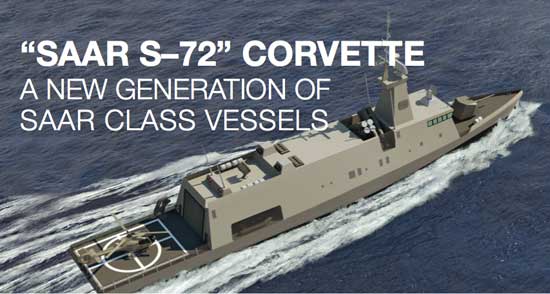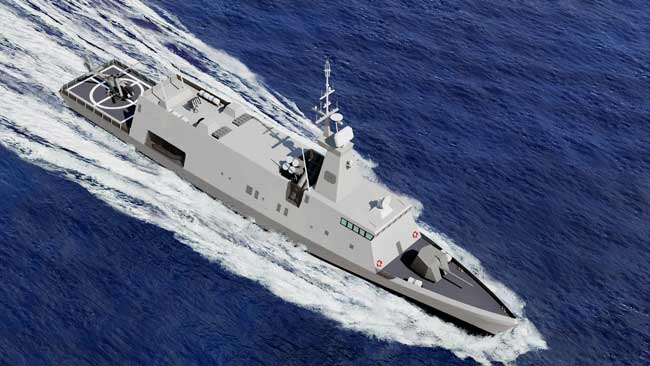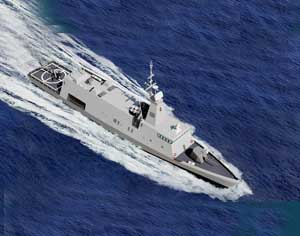
Israel Shipyards is expanding the SAAR class of missile boats, extending the range from missile boats into ‘Mini Corvette’ class vessels. The new class is addressing the growing requirements of Israel and other nations in extending maritime control and sovereignty far from their territorial waters. Defense-Update reports from IMDEX 2013.

The Israel Navy is required to expand the security and responsibility over much larger area while doing that with an ageing fleet of Saar 4, 4.5 missile boats and 5 corvettes. If only to maintain the numbers of boats in service, the Israel Navy will require several new vessels in the coming years. Many of these vessels are becoming obsolete – some of the oldest missile boats in service – INS Atzmaut (Independence) and INS Nitzahon (Victory) are reaching 35 years in service – an age considered the end of service life for such boats. Therefore, new platforms will be required in the near future. Through the years the Navy acquired 20 Saar 4/4.5 vessels, but the cash-strapped service could not afford to buy larger vessels, and, therefore limited the procurement of the larger Saar 5 corvettes to the three vessels built in the U.S. funded by Washington’s Foreign Military Sales (FMS).
A more detailed version of this article is available for members – Join now!
The new Saar S-72 unveiled by Israel Shipyard at the recent IMDEX event in Singapore fits between the Navy’s existing Saar 4.5 missile boats, and Saar 5 corvettes. Through the years Israel Shipyards have built 33 Saar 4 and 4.5 class missile boats; 20 were delivered to the Israel Navy over the years. With the new Mini Corvette the shipyard hopes to expand it’s offering to meet the evolving requirements, of the Israel Navy, as well as of international customers overseas.
For Coast Guards and non-military operations the S-72 is a new platform that better fits the category of Offshore Patrol Vessel (OPV). For naval applications the same 800-ton vessel can be finished as a versatile ‘Mini Corvette’. Both are highly applicable to asymmetric warfare at sea, providing sufficient space for command and control, accommodation for special task forces on military or counter terror missions, or supporting rapid response or rescue operations. The large hangar stores a medium size helicopter and UAVs. The adjacent 15 meter long flight deck supports medium size helicopters up to AW139 class. The vessel is configured with loading crane, storage and berth deploying rubber boats / RHIB’s or unmanned surface vessels.

In the military configuration the Saar-72 will offer a significant upgrade over the current Saar 4.5 – in performance and combat capabilities. Applied with a slanted stealth finish, recessed exhausts, and radar integrated mast, designed to host both emitters (radar, EW) and passive sensors (ESM) without interference. The vessel can accommodate the IAI Elta EL/M-2258 Advanced lightweight Phased Array (ALPHA) multi-mission naval radar, designed for blue water and littoral warfare support. This radar was selected by the Israel Navy for the upgrading of existing vessels as well as for its new combatants. The vessel can carry different weapons, including IAI’s Barak 8 type missiles, various anti-ship missiles and precision surface attack weapons. The naval configuration is also fitted with an advanced naval gun.
Saar 72 type vessels are designed with spacious accommodation to 50 crewmembers plus 20 additional accommodations for passengers or special troops. It is equipped to sail on a 21 day missions, with mission range above 3000 NM.
Sources at the Israeli shipyard said they can complete the design and construction of the lead S-72/Saar-72 ship within a period of 30 months, and produce follow-on vessels in eight months. The shipyard can build the 72m’ vessel with its current facilities, but to accommodate the 85 meter version some expansions will be necessary.

















